On Wednesday evening Tesla Motors CEO Elon Musk posted a response to John Broder's Tesla Model S review in last weekend's NY Times. That review portrayed the Model S as unable to finish a simple road trip, while Musk's response, with its detailed data, instead claims that Broder's article was very inaccurate, or worse. While Musk praises the NY Times for its reputation for honest and fair reporting, his blog post describes Broder's article as inaccurate or a fabrication and calls on the NY Times to investigate.
Broder's article was ostensibly meant to be to test the Tesla Model S on a fairly typical road trip, from Washington D.C. to Connecticut, and back. We went over the trip previously in NY Times' writer Broder makes EV rookie mistakes on failed Model S road trip. The short version of the story is that he traveled from Washington D.C. north, stopping at the Supercharger stations in Delaware and Milford Conn. along the way. These Supercharger stations were installed in December and are the first part of the Supercharger network on the East Coast. Eventually the Supercharger network is meant to allow owners of the Tesla Model S, Model X and future Tesla electric cars, to drive coast-to-coast on electricity. It would be more than interesting to see careful testing of Tesla's claims for that network.
Broder made several mistakes along his trip such as not ensuring the car was fully charged at critical parts of the trip. He ended up in a not-terribly-remote part of Connecticut (Norwich) with insufficient range to make it back to Milford. He ended up stranded on the side of the highway, and was able to take a picture of the Tesla Model S on a flatbed tow truck.
On Monday, Elon Musk took to Twitter and a CNBC interview to slam Broder's article, promising a detailed blog post. Which was not published until Wednesday afternoon. That blog post tells a story similar to the conclusions we drew in the article linked earlier ("EV rookie mistakes") but has detailed data to back up the reasoning.
That blog post makes a list of claims that run counter to what Broder claimed. Each side in this argument has made claims, the question is which side is correct and are either of them purposely fabricating evidence?
A key fact remains in all the details printed below. Broder only recharged to 73% at the Milford Supercharger station. If his intent was to travel to Boston, the route he chose was 163 miles, and a 90% recharge would have given the car a 242 miles range, and a 100% recharge would have given it a 260+ mile range. That would have ensured a comfortable arrival in Boston. In addition, Broder could have chosen a different route to Boston, that required fewer miles, and had more public J1772 charging stations to use as a backup charging solution. For some reason Broder failed to do any of that, and it isn't explained why by either himself or Tesla.
Musk claims:
The Model S driven by Broder never completely ran out of energy. Broder claimed that his Model S locked up so badly the tow truck driver had to drag it onto the truck, and then had to spend 20 minutes at the Supercharger before the car would turn itself on sufficiently enough for the car to roll off the truck.
The final leg of Broder's trip was a 61 mile distance, but he unplugged the charging cord when the estimated range remaining was 32 miles. This is one of the rookie mistakes we mentioned earlier. What Musk claims is that his choice to unplug the charging cable was expressly against advice from the Tesla service department.
Musk claims that on the final leg of Broder's trip he drove right past several public charging stations. He had a dashboard warning him emphatically to stop and charge. He could easily have stopped at any of these charging stations to do some charging. One is at the Saybrook Inn in Saybrook, there is a car dealership also in Saybrook with a charging station, the East Haven Town Hall has one, and there is one in New London not too far off the route he took.
Broder claims that early in his trip he set the cruise control to 54 miles/hr, and at times drove as slow as 45 miles/hr on the freeway. Musk claims that the vehicle data logs show the cruise control was never set to 54 miles/hr, that he never limped along at 45 miles/hr, and instead drove at speeds between 65 miles/hr and 81 miles/hr. While we can understand the temptation to enjoy the ultra high speed and acceleration of the Model S, it's a matter of simple physics that higher speeds require more energy and if the goal is to complete a long road trip one must not lead foot it.
Broder also claimed to have turned the climate control down, but vehicle data longs show he never did so, had it set to 72 degrees and even raised it once to 74 degrees.
In Milford, Broder claimed to have spent 58 minutes recharging but, according to Musk, vehicle data logs show that charge session was only 47 minutes. It gave him a 185 mile driving range but if he'd have simply waited another 11 minutes the range would have been enough for the trip with no need for a tow truck.
Basically there is a big gap between the claims by John Broder and Tesla Motors. On the 12th Broder wrote a follow-up posting claiming that his initial report was accurate, and that he had indeed done all the things he said. Musk's post includes graphs from the vehicle log data annotated with details showing what he actually did.
Musk's blog post has two details which we can quibble over. First, he never explains why the Tesla service person sent Broder to Norwich to use a public charging station there. He could have driven south and used one of the two stations in Saybrook, instead. Second a map is shown listing all the charging stations along Broder's route, however that map doesn't reach as far as Norwich but stops in East Haven. If that map had gone as far as Norwich it would have shown there is less electric car recharging infrastructure in that vicinity. It also calls into question why Broder went to Norwich when there are other highway corridors leading to Boston with more charging stations.
Broder's followup post claims his goal was to test the Supercharger network, not to test driving the Model S on a long road trip. In that case why would he try to make it to Boston when the east coast network is not yet built out sufficiently? Any halfway experienced EV driver will know to do some research into alternate routes and charging stations before setting out on a long trip.
The core question here is reputation and truthfulness. Both are casting doubt on each others credibility. For example, in addition to the errors Musk points out, he notes that in the past Broder has written articles claiming "the state of the electric car is dismal, the victim of hyped expectations, technological flops, high costs and a hostile political climate.” Musk apparently wants to paint Broder as being predisposed to not like the Tesla Model S, or any other electric car. While the NY Times has a high reputation they are not without tarnish, and some of their reporters have been known to create fabrications (cough cough, Judith Miller).
Our colleague Nick Zart suggested NYT, John Broder and Tesla Show Mainstream News Media Needs a Make Over.
Broder's followup post: NY Times Wheels Blog






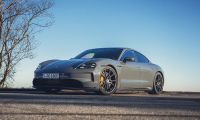
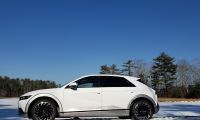
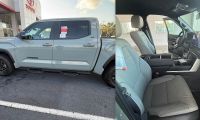
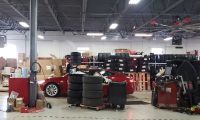
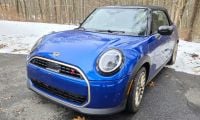
Comments
I find the next batch of anti
Permalink
I find the next batch of anti U.S. American powered vehicle newswires on this topic that are trying to support the feeble attempt made by the NYC to show plugins are junk, now do not allow reader comments. Folks, there are bought and paid for media outlets where Big Money speaks. Clearly the NYT and the Wash Post can be had for a price you have an agenda you want them to write about.
...
It is quite clear to me the NYT writer would have trouble finding where to wipe themself afterward. If you are not knowledgeable on how to drive, where, and when to refuel a shorter range non-foreign-oil vehicle that runs via:
hydrogen fuel cell
B100 100% biodiesel or straight vegetable oil (svo aka wvo)
natural-gas/CNG
or an EV,
then you should not only not write the story, you should not be on the road as you are a clueless loser.
I wonder, what would any normal person's response be to someone who said to them,
"I drove my SUV out into the middle of the desert yesterday with only 2 gallons of gas in it. And would you believe it ran out of gas in the middle of no-where, and I had to call the AAA to rescue me! These gas cars are junk!"
Unfortunately, separating stupidity from motor-journalists seems to be difficult.
Why on Earth would they stay overnight where they couldn't plug the EV in?
That is basic EV driving 101.
{brucedp.150m.com}.